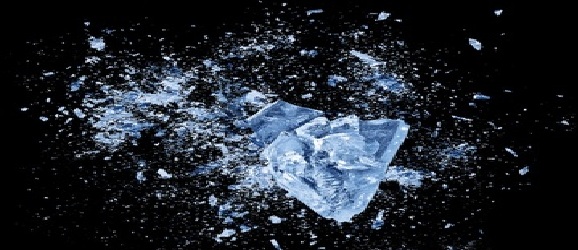Non-Magic Explanation Found for Exploding Bottle Trick
This article is more than 2 years old

“Tricks” such as quickly pulling a tablecloth from beneath a dinner setting and making milk squirt out of your eye rely on relatively simple physics and physiology in order gain their intended reactions. A messier stunt is the old “slap the top of a glass bottle filled with water and make the bottom smash out,” trick. Until recently, it wasn’t specifically understood exactly why this happened, but thanks to high-speed video captures of the breakage in progress, now we know.
Here’s the simple science behind it, as paraphrased by me: Fluids leave a void of low pressure when accelerating from one area to another, which can make the liquid vaporize if the temperature doesn’t change. The vaporized liquid turns into bubbles, which is called cavitation, a process that similarly eats holes in propellers, due to their high velocity of the blades when cutting through water. Once the bottle is hit, the liquid at the bottom of the bottle shifts a split-second faster than the liquid above, and cavitation occurs.
And now the stranger part. Because the slap across the top of the bottle is brief, the pressure at the bottom of the bottle returns to normal, which collapses the newly formed bubbles 10 times faster than they formed. Obviously, this is too much pressure for the glass, and the bottom gives out, endangering barefoot parlor magicians everywhere.
Because no revelations exist solely for their own existence, this finding may help to explain container damage in the shipping industry, as well as help engineers design more efficient glass bottles. I’m assuming there would be some kind of anti-cavitation mechanism attached to the bottom of every future manufactured glass bottle, but I’ve been wrong before.
Let us be favoritists and thank the NFL and MythBusters for revolutionizing the way high-speed slow motion can be used. Check out the spliter-happy video below.
One tip to consider before trying your own experiment: use regular old water, as any carbonated beverages create bubbles filled with carbon dioxide, which dissipates less violently. And of course, be careful.












